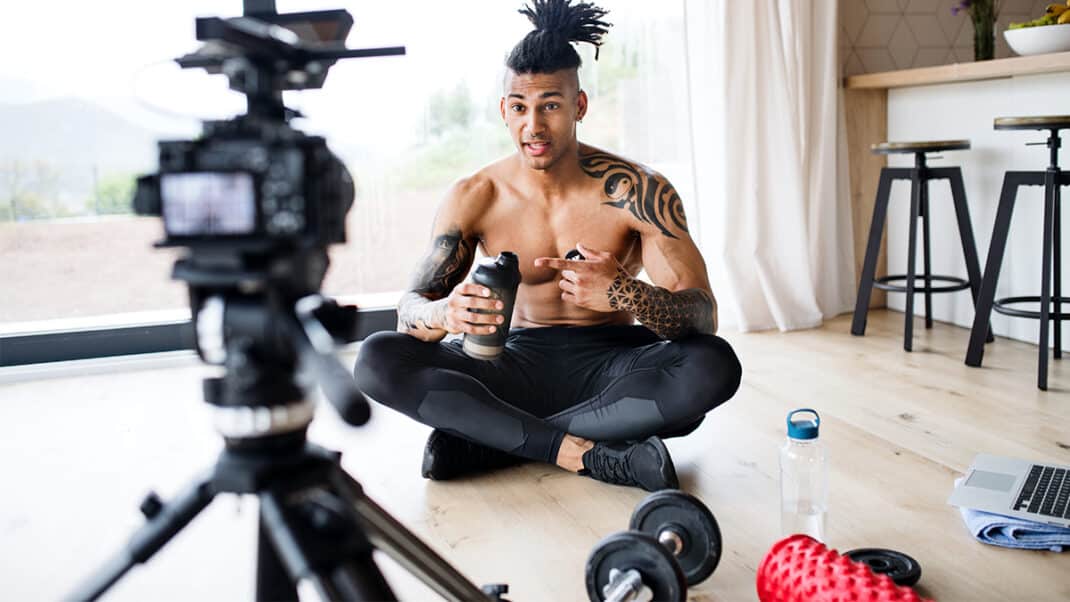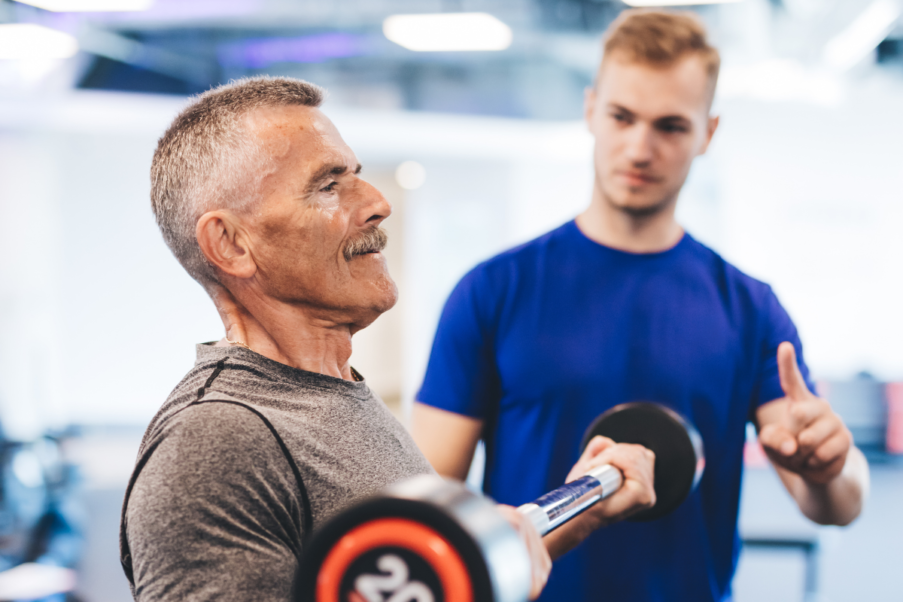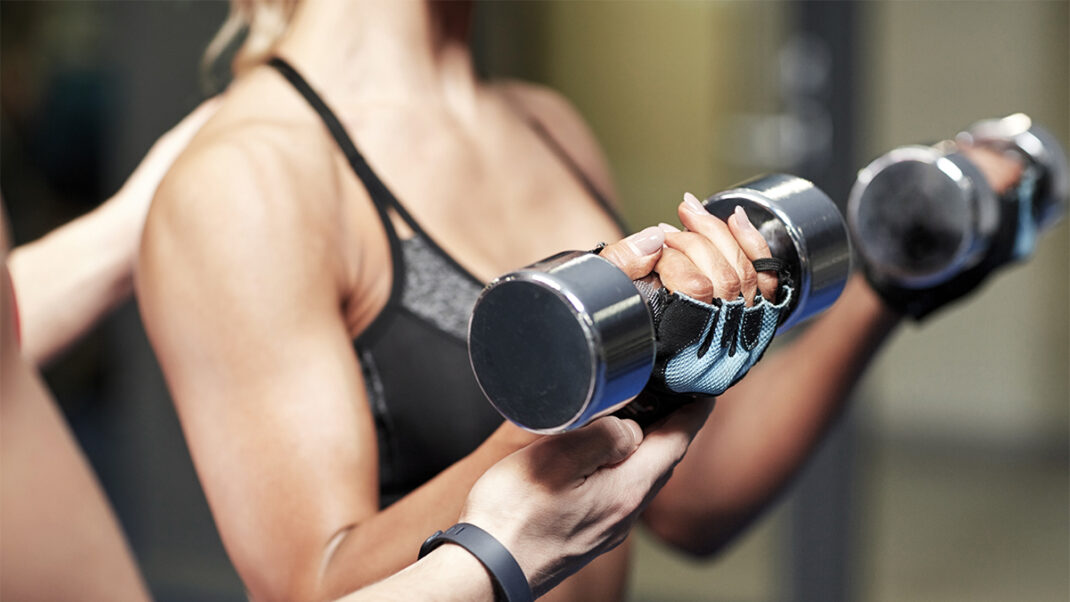Inclusivity for Transgender Clients
The considerations—and rewards—of working with transgender clients.

More than ever, creating inclusivity is vital for fit pros. And, thankfully, the fitness industry is opening its arms to transgender clients. It couldn’t be more important. Think about it: The aim is to help people lead healthier lives, but there are many who may not feel comfortable in the current fitness environment.
Transformative Changes for Clients and Trainers
Kali Stewart, MS, from Milagros Fitness/Online Coaching in San Diego knows that learning the special skills it takes to work with transgender clients is well worth the effort. Her client, Sam, “needed help with a strength program that would aid in his transition from a woman to a man,” says Stewart. “I felt truly honored to help.”
When asked how trainers can best serve transgender clients, she says the key is listening and staying flexible. “Ask for permission to ask questions, and then listen. Be patient with your client while they are redefining their physical form, [and] be ready to make amendments to your program.”
Read Stewart and Sam’s story in Fit for Change.
Little things can make a big difference in helping clients feel comfortable, such as using preferred pronouns. Having a strategy for diversity, equity and inclusion is key.
Practical Considerations for Transgender Clients
Chrissy King is a writer, speaker, fitness and strength coach, and an advocate for anti-racism, diversity, inclusion and equity in the wellness industry.
She points out that, when creating inclusivity, you need to consider every angle. “When we don’t consider how identities overlap, we can forget how difficult it may be for some people to feel safe in our fitness spaces,” she explains. “For example, if you own a gym, do you have gender-neutral changing facilities or gender-neutral bathrooms? If not, that’s a problem, because if someone is transgender, nonbinary or gender nonconforming, how do they change clothes or feel safe going to the bathroom? This is one aspect that’s often overlooked when we fail to take an intersectional approach to fitness.”
See Creating Inclusivity in Fitness Spaces.
Looking for another practical consideration? How about growing your business? According to a study by the Williams Institute at the UCLA School of Law, an estimated 1.4 million Americans identify as being transgender (Flores et al. 2016). The actual number is assumed to be much larger, because the U.S. Census Bureau offers only two options for gender (male and female), making it difficult to get an accurate count.
Training Considerations
Once your heart is open to welcoming transgender clients and your facility is ready, there are additional programming items to consider. IDEA fitness expert Maria Luque, PhD, first explored the topic of creating an inclusive experience for special populations in 2016, and it’s an important topic to revisit.
Hormone Treatment
Hormone treatment can influence how well a transgender client responds to training. Luque says it’s important to understand the endocrine system and the roles that estrogen and testosterone play in metabolism. Supplemental estrogen and testosterone can influence where body fat is deposited, how well someone gains or loses muscle mass, and how weight is gained or lost (Bonzagni 2014). Perhaps you’re working with a person transitioning from male to female who wants to gain strength but also wants to lose muscle. Or how about a client who is supplementing with testosterone but still has estrogen-producing organs? Taking hormone influences into consideration is necessary for understanding these clients and providing them optimal help.
Hormone treatment can increase risks for certain health conditions. For example, estrogen therapy can raise the risk for thrombo-embolic and vascular events, low HDL levels and osteopenia (Weinand & Safer 2015). Testosterone supplementation has been shown to significantly increase body mass index (Fernandez & Tannock 2016). Learning about these parameters can help you better understand what your clients are going through.
Stages of Transition
Luque explains that the stage of transition can also play a vital role. Has the client already gone through gender reassignment surgery? Or will he or she be going through it while starting a fitness routine? If the latter, it’s important to know the different surgeries involved (some are more invasive then others) (Unger 2014).
Fitness has always been about transformation. What could be a better match than to use your skills to help transgender clients make their own transformation?
References
Bonzagni, A.F. 2014. Understanding the effects of long-term hormone therapy in transgender individuals being provided care at Boston Medical Center Endocrinology Clinic: A quality assurance project. Accessed Jun. 30, 2016. http://gradworks.umi.com/15/59/1559797.html.
Fernandez, J.D., & Tannock, L.R. 2016. Metabolic effects of hormone therapy in transgender patients. Endocrine Practice, 22 (4), 383-88.
Flores, A.R., et al. 2016. How many adults identify as transgender in the United States. Accessed Jun. 30, 2016. www.williamsinstitute.law.ucla.edu/research/how-many-adults-identify-as-transgender-in-the-United-States/.
Unger, C. 2014. Care of the transgender patient: The role of the gynecologist. American Journal of Obstetrics & Gynecology, 210 (1), 16-26.
Weinand, J.D., & Safer, J.D. 2015. Hormone therapy in transgender adults is safe with provider supervision: A review of hormone therapy sequelae for transgender individuals. Journal of Clinical & Translational Endocrinology, 2 (2), 55-60.






